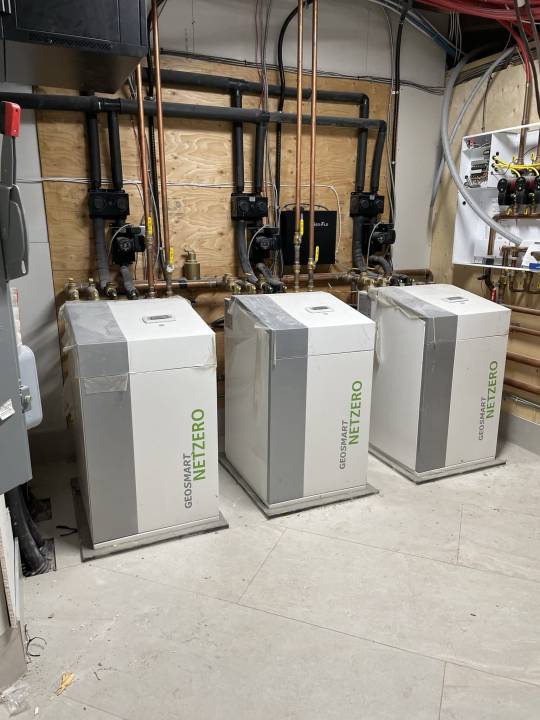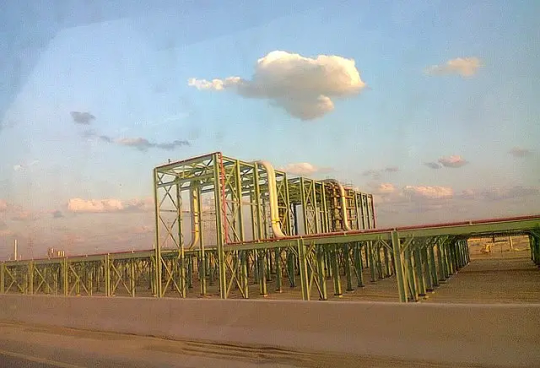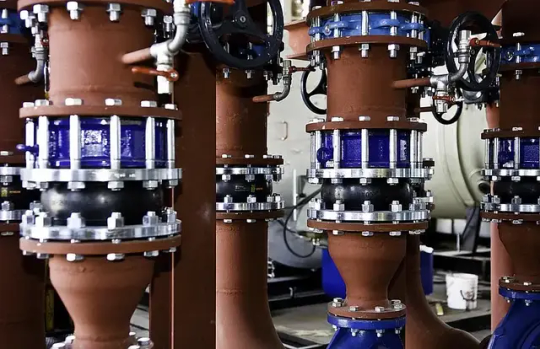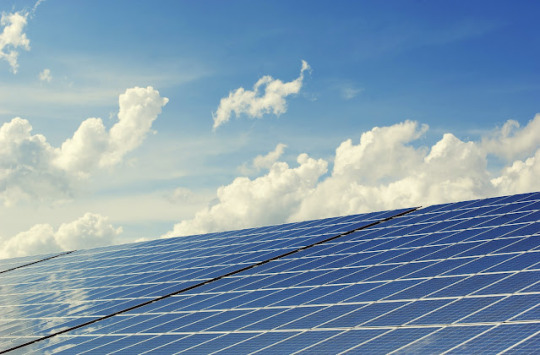#Geothermalenergy
Explore tagged Tumblr posts
Text
#good news#science#environmentalism#climate change#environment#geothermalenergy#geothermal power#geothermal energy#green energy
18 notes
·
View notes
Text
"A Croatian energy company has discovered an underwater lake of superheated water that could supply the country’s far north with clean geothermal electricity."
18 notes
·
View notes
Text
Achieve A Net Zero Home Using Geothermal Heating And Solar
In the fight against climate change, net zero homes have emerged as a remarkable solution, pushing the boundaries of energy efficiency and sustainability. But what does it mean, and how does one achieve it? Let’s dive in.
What is a Net Zero Home?
A net zero home is a residential building that generates as much if not more, energy than it consumes. This can be achieved using renewable energy technologies such as solar panels and geothermal heating and cooling systems.
A Closer Look at How Geothermal Systems Work
We need to start beneath the Earth’s surface to appreciate the science behind geothermal systems. The Earth’s internal heat is transferred to the surface by thermal conduction and convection, resulting in a relatively consistent underground temperature throughout the year, usually between 45°F (7°C) and 75°F (21°C), depending on the latitude. Geothermal systems tap into this reliable and consistent heat source for heating and cooling purposes.
A typical geothermal system consists of three main components: the ground heat exchanger, the heat pump unit, and the air delivery system. The ground heat exchanger is a series of pipes buried near the home, commonly called a loop. Depending on the available space, this loop can be installed vertically or horizontally. These pipes are filled with a heat transfer fluid (commonly a mixture of water and antifreeze).
Heating Mode
In heating mode, the fluid circulates through this loop, absorbing heat from the Earth and carrying it to the heat pump unit. The heat pump then extracts this heat and distributes it throughout the home using the air delivery system, often a system of ducts.
Cooling Mode
For cooling, the process is reversed. The heat pump absorbs heat from the home’s interior, transfers it to the fluid in the loop, which then disperses the heat into the ground. Hence, the Earth serves as a heat sink in summer.
Efficiency Unleashed
Geothermal systems are incredibly efficient because they move heat rather than generate it. According to the U.S. Department of Energy, geothermal heat pumps can achieve efficiencies of 300%-600% on the coldest winter nights, compared to 175%-250% for air-source heat pumps on cool days.
Another advantage of geothermal systems is their lifespan. The indoor components can last about 25 years, while the underground loop system lasts more than 50 years. This long lifespan, coupled with energy savings, makes geothermal systems a desirable option for homeowners aiming for a net zero home.
Though the initial costs of geothermal systems can be higher than traditional heating and cooling systems, the energy savings over time can make them a worthwhile investment. Federal, state, and local incentives can also help offset these initial costs, making geothermal systems more accessible to homeowners.
Harnessing Solar Energy for Home Use to Achieve Net Zero
Solar energy harnessing, especially for home use, has seen significant advancement. It’s a critical component in achieving a net-zero home, and understanding its functionality is vital to maximizing its benefits.
Solar energy harnessing starts with solar panels, often mounted on rooftops, for maximum sunlight exposure. Each panel comprises photovoltaic (PV) cells – semiconductors usually made from silicon. When sunlight hits these cells, the photons from the light stimulate the electrons in the silicon, initiating an electric current. This is known as the photovoltaic effect.
The electricity generated by the panels is typically in direct current (DC). However, most household appliances use alternating current (AC). Therefore, the DC electricity is converted into AC electricity via a device known as an inverter.
Solar panels are most productive when the sun is at its peak – usually in the middle of the day. However, energy demand can extend into the night when the panels aren’t producing electricity. This is where energy storage systems, such as solar batteries, become essential. These batteries store excess energy produced during the day for use during the night or during periods of high demand, ensuring a continuous power supply.
One of the attractive features of solar energy systems is the possibility of grid interconnection. In many regions, homeowners can sell excess electricity back to the grid, a practice known as net metering. It reduces energy costs and can lead to energy credits when more power is generated than used.
Combining Solar and Geothermal Power for Net Zero Homes

Combining solar and geothermal power systems can be a powerful approach to achieving net zero energy status in homes. Both technologies complement each other, providing a more balanced and stable energy supply throughout the year.
Take, for example, a scenario where a home is equipped with both a solar panel system and a geothermal heat pump. During the summer months, the solar panels can generate electricity during the day to power the home, with excess power stored in batteries for use at night. The geothermal system, on the other hand, can provide efficient cooling, taking advantage of the stable underground temperatures to dissipate heat from the home. Any excess power generated by the solar panels could also be used to power the geothermal system or be fed back into the grid, resulting in energy credits.
In winter, while the efficiency of solar panels might reduce due to fewer sunlight hours (shorter days), the geothermal system can take over, providing highly efficient heating. The heat pump draws heat from the ground and distributes it throughout the home. Solar panels can still contribute to the home’s energy needs during the day, reducing the load on the geothermal system and resulting in more efficient energy use.
Major Geothermal Projects in Alberta – Eavor-Loop
A groundbreaking geothermal project, valued at $10 million and currently being built in the heart of Alberta, is being celebrated as a significant innovation due to its independence from fracking or water and its zero greenhouse gas emissions.
Upon his visit to the construction site close to Rocky Mountain House, Alberta’s Infrastructure Minister Prasad Panda lauded the pilot project as a major turning point.
The project, known as the Eavor-Loop, is unique in its kind, according to John Redfern, the president and CEO of Eavor Technologies, which is headquartered in Calgary.
Geothermal energy, which is a sustainable form of energy drawn from the Earth’s stored heat, operates much like a radiator in this closed-loop geothermal project, explained Redfern.
He added, “We’re utilizing conventional components, but assembling them in an unconventional manner.”
He further explained, “For instance, our approach contrasts with standard practices. Generally, when drilling a well, the objective is to prevent intersecting another well. However, we aim for intersection in our operation… We commence a few kilometers apart, drill down a similar distance, then take a right turn and drill towards each other, connecting one well with the other, thus forming a massive U-shaped well.
“This technique essentially generates a radiator effect.”
The��Eavor-Loop recently gained financial support of $1 million from Alberta Innovates and Emissions Reduction Alberta.
Rebates and Incentives
While the initial costs of installing solar and geothermal systems can be significant, the energy savings over time make them cost-effective. Additionally, homeowners can benefit from government incentives, rebates, and tax credits designed to encourage the adoption of renewable energy technologies. As part of the Canada Greener Homes Initiative, homeowners have access to federal grants and provincial grants and interest free loans up to $45K. New residential homes can save 25% of your CMHC premium through the CMHC Eco Plus program.
2 notes
·
View notes
Text
🚨 Discover Iceland's Volcano Secrets! 🌋 🌍 A Geothermal Paradise: How Iceland's volcanoes fuel renewable energy 🔋 🌡️ Erupting with Power: What makes Iceland's volcanoes unique? 🌋💥 🎒 Adventure Awaits: Volcano tourism – your next thrilling trip! 🏞️🌋 🌿 Volcanic Wonders: From lava fields to geothermal energy ⚡ 💬 Engage with Nature's Fury: Why these eruptions are more than just a spectacle 🌋🔥
👉 #IcelandVolcanoes #VolcanicTourism #GeothermalEnergy #IcelandAdventure #NatureFascination #VolcanoEruptions #TravelGoals #ScienceExploration #EarthPower #RenewableEnergy #VolcanoLove #ExploreIceland #VolcanoAddicts #NatureLovers
#IcelandVolcanoes#VolcanicTourism#GeothermalEnergy#IcelandAdventure#NatureFascination#VolcanoEruptions#TravelGoals#ScienceExploration#EarthPower#RenewableEnergy#VolcanoLove#ExploreIceland#VolcanoAddicts#NatureLovers
0 notes
Text


Let's Talk Green Energy! How HDD Minimizes Environmental Impact for Renewable Projects The world is embracing renewable energy sources like geothermal and wind power. But installing the infrastructure needed to harness this clean energy can be a challenge. This is where Horizontal Directional Drilling (HDD) emerges as a game-changer, offering a sustainable and efficient solution for installing geothermal systems and wind turbine cables.
#HDD#HorizontalDirectionalDrilling#RenewableEnergy#CleanTech#SustainableSolutions#Construction#Infrastructure#Innovation#FutureOfEnergy#TrenchlessTech#EcoFriendly#MinimallyInvasive#EfficientInstallation#SafetyFirst#WindPower#GeothermalEnergy#SustainabilityMatters#RenewableRevolution#GreenFuture#BuildingAGreenerFuture
0 notes
Text
The global Geothermal Energy Market is expected to grow from an estimated USD 7.0 billion in 2022 to USD 9.4 billion in 2027, at a CAGR of 5.9% according to a new report by MarketsandMarkets™.
#geothermal energy#geothermal#geothermalenergy#geothermal heat pump#geothermal power#geothermal power plant#clean electricity#energy#power#electricity#power generation#renewable energy#renewable#renewable power#renewableenergy#renewables#clean energy#thermal power plant#power plant#power plants
1 note
·
View note
Text
Aramco: Leading the Way to Sustainability

Paving the Path to Carbon Neutrality
Saudi Arabia's 2060 Net-Zero Ambition Riyadh, Saudi Arabia – In a bold move towards addressing climate change and curbing greenhouse gas emissions, Aramco, one of the world's foremost integrated energy and chemicals companies, announced a suite of groundbreaking projects aimed at reducing its carbon footprint. These initiatives, unveiled on the sidelines of MENA Climate Week 2023, represent a significant step towards Aramco's ambition of achieving net-zero Scope 1 and Scope 2 greenhouse gas emissions across its wholly-owned and operated assets by 2050, while also aligning with the Kingdom of Saudi Arabia's 2060 net-zero goal.

Amaco in Calgary, 2019. Photo by Jason Woodhead. Flickr.
Innovative Approaches for a Sustainable Future
Ahmad Al Khowaiter, Aramco's Executive Vice President of Technology and innovation, expressed the company's commitment to innovative solutions to combat climate change. "These projects highlight just some of the innovative ways that Aramco aims to help mitigate greenhouse gas emissions and address climate change," he said. "This includes new and groundbreaking approaches that align with our vision of a circular carbon economy." Lower-Carbon Hydrogen Following the success of a pilot project in Denmark, Aramco is set to collaborate with Topsoe, an industry leader in energy-efficient technologies, to construct a lower-carbon hydrogen demonstration plant at the Shaybah Natural Gas Liquids (NGL) recovery plant in Saudi Arabia. Expected to produce six tons of hydrogen per day, the plant will employ renewable electricity for electrified steam reforming of hydrocarbons, yielding lower-carbon hydrogen for power generation, with captured CO2 subsequently sequestered.

New energy savings boiler plant. Photo by USACE Europe District. Flickr. Direct Air Capture Aramco is also partnering with Siemens Energy to develop a Direct Air Capture (DAC) test unit in Dhahran, Saudi Arabia. With the capacity to capture up to 12 tons of CO2 per year, the test unit is a precursor to a larger pilot plant expected to capture a staggering 1,250 tons of CO2 annually, scheduled for completion in 2024. Novel CO2 Sequestration In yet another innovative stride, Aramco has successfully piloted a CO2 sequestration method using in situ mineralization. The process involves dissolving CO2 in water and injecting it into volcanic rocks in Jazan, Saudi Arabia, resulting in the permanent conversion of CO2 into carbonate rocks. This pilot project was a collaborative effort between Aramco and the King Abdullah University of Science and Technology, introducing various technologies to enhance efficiency and reduce costs. Geothermal Energy Aramco is also exploring the expansion of its renewable energy portfolio through geothermal energy, leveraging naturally heated underground aquifers to produce electricity. Identified areas on Saudi Arabia's west coast have already been mapped using advanced subsurface technologies, and investigations are underway to assess the extent of geothermal resources at each location.

Vintage photo of Aramco workers. Photo by Tribes of the World. Flickr.
Aramco's Transformation into a Sustainable Energy Leader
Aramco, officially known as the Saudi Arabian Oil Company, has a rich history and ambitious future objectives. Established in 1933, it has played a central role in shaping the global oil industry and boasts vast reserves of crude oil and gas fields, making it the world's largest integrated oil company. Yet, Aramco's vision extends beyond traditional hydrocarbons, aligning with Saudi Arabia's Vision 2060 net-zero goal. Pioneering Clean Technologies Aramco is actively investing in research and development projects focused on clean technologies, such as hydrogen fuel cells and carbon capture, as part of its transition towards a sustainable energy future. The company aims to be at the forefront of innovation, driving progress across various sectors globally. While its status as a dominant oil producer will remain pivotal for the foreseeable future, Aramco's vision surpasses conventional boundaries. The company aspires to be not just an energy provider but a catalyst for innovation, pushing the envelope and championing sustainable practices. In doing so, Aramco exemplifies how even traditional energy giants can pivot towards a more sustainable and environmentally conscious future. Sources: THX News & Aramco. Read the full article
#Aramco#Circularcarboneconomy#Cleantechnologies#CO2sequestration#DirectAirCapture(DAC)#Emissionsreductionsolutions#GeothermalEnergy#Lower-carbonhydrogen#SaudiArabianet-zero#Sustainableenergyleader
0 notes
Photo

(via A Beginner's Guide to Geothermal Power)
🌿 Ever wondered how the Earth's own heat can light up our world? Our latest post is your go-to guide for understanding #GeothermalEnergy. Check it out! 💡🌍
A Beginner’s Guide to Geothermal Power
Today, we’re switching gears to talk about a renewable energy source that doesn’t get the limelight it deserves: Geothermal Power. While solar panels and wind turbines often steal the show, the Earth’s own heat is working around the clock, offering us a treasure trove of energy—right beneath our feet! So, let’s dig in (pun totally intended!) and explore what geothermal power is all about, where it’s making waves, and why it might just be the unsung hero of renewable energy...
🔗 https://vortexofadigitalkind.com/beginners-guide-to-geothermal-power/
0 notes
Text
Geothermal Energy: From Basics to Future

Introduction to Geothermal Energy
1. Definition and Basic Principles of Geothermal Energy: Geothermal energy originates from the heat within the Earth's sub-surface. It's a renewable energy form that natural processes like radioactive decay continuously generate. The Greek words "geo" (earth) and "therme" (heat) combine to form the term "geothermal", effectively translating to "Earth's heat." We can harness and use this heat in various ways. The Earth's temperature at shallow depths remains fairly constant throughout the year, which can be utilized to heat and cool buildings with geothermal heat pumps. At greater depths, temperatures can soar to hundreds of degrees Celsius. These conditions create geothermal reservoirs, from which we can extract steam and hot water to power electricity-generating turbines. 2. History of Geothermal Energy Use: People have been using geothermal energy since ancient times, for bathing, cooking, and heating, with hot springs serving as the source. Historians believe that the oldest known spa, a stone pool fed by a hot spring, was built on Lisan Mountain, China, in the 3rd century BC. The early 19th century near Pisa, Italy, marked the first industrial use of geothermal energy. Here, people used steam from natural vents to extract boric acid from volcanic mud. In 1904, the first test of a geothermal power generator took place in Larderello, Italy. This generator successfully lit four light bulbs. By the 1930s, commercial production of geothermal electricity was well underway in Italy. In the United States, geothermal energy was first used to produce electricity in 1960, at The Geysers field in California. The site is still one of the world's largest geothermal fields. The development and use of geothermal energy have been growing since then. With advances in technology, it's now possible to produce geothermal energy even in areas without hot springs or other visible signs of geothermal activity, expanding its potential as a significant source of clean, renewable energy.

Types of Geothermal Energy
1. Direct Use and District Heating Systems: Direct use of geothermal energy involves harnessing the heat from hot water reservoirs near the earth's surface and using it directly for heating buildings, growing plants in greenhouses, de-icing roads, or for industrial processes that require heat. The temperature of these resources typically ranges from 20°C to 150°C. District heating systems use networks of insulated pipes to distribute hot water or steam from a geothermal well to provide space heating and hot water to homes and businesses in a community. It's particularly effective in areas with a high population density and is used widely in countries like Iceland and Denmark. 2. Electricity Generation in Power Plants: Geothermal power plants produce electricity by using heat from the Earth's core to heat water or another working fluid, which then turns a turbine connected to a generator. There are three types of geothermal power plants: - Dry steam plants use steam from a geothermal reservoir to turn generator turbines. The first geothermal power plant was a dry steam design. - Flash steam plants pull deep, high-pressure hot water into lower-pressure tanks and use the resulting flashed steam to drive turbines. - Binary cycle plants use the heat from hot water to boil a working fluid, usually an organic compound with a low boiling point. The vapor from the working fluid then drives the turbines. 3. Geothermal Heat Pumps: Geothermal heat pumps, also known as ground-source heat pumps, leverage the relatively stable temperature of the ground or bodies of water to provide heating in the winter and cooling in the summer. Pipes are buried in the ground and filled with a fluid. In the winter, the fluid absorbs heat from the earth and brings it to the surface to warm the building. In the summer, the system operates in reverse, removing heat from the building and depositing it into the ground. Each of these methods has its advantages and disadvantages, but all provide cleaner and more sustainable energy solutions than many traditional forms of energy.

Geothermal Energy Resources
1. Geothermal Reservoirs: Geothermal reservoirs are regions located a few kilometers beneath the Earth's surface where we find abundant hot water and steam. They are created when groundwater seeps down into the Earth and is heated by magma. Over time, this heated water can accumulate in permeable rock or fractures, creating a geothermal reservoir. These reservoirs are the primary targets for geothermal drilling and development for electricity generation. 2. Hot Springs and Geysers: Natural surface manifestations of geothermal energy include hot springs and geysers. Hot groundwater surfaces at specific locations known as hot springs. For thousands of years, humans have bathed in these hot springs, and they remain a popular recreational activity today. Just like hot springs, magma heats underground water to create geysers. The distinctive feature of geysers is the intermittent discharges of turbulently ejected water, often accompanied by steam. While people don't commonly use geysers and hot springs for energy production, they often indicate a strong geothermal resource. This resource could be suitable for power production or direct use applications. 3. Tectonic Plate Boundaries and Hot Spots: Geothermal resources are often found along tectonic plate boundaries, where Earth's crust is most active with volcanic activity and earthquakes. These include the edges of the Pacific Plate, also known as the "Ring of Fire," and the boundary between the North American Plate and the Eurasian Plate, which runs through Iceland. Hot spots are places within tectonic plates where plumes of magma rise from deep within the Earth to create volcanic activity. They can also serve as sources of geothermal energy. A well-known example is the Yellowstone Hotspot in the United States. These geothermal resources provide significant renewable energy potential, offering a reliable, clean, and virtually inexhaustible power source. Harnessing this energy effectively and responsibly, however, presents several technical and environmental challenges.

Geothermal Energy Extraction and Conversion
1. Drilling and Extraction Methods: Drilling is the first step in the extraction of geothermal energy, similar to drilling for oil or natural gas. However, geothermal drilling often involves drilling several kilometers into the Earth's crust to reach high-temperature reservoirs. There are two primary methods of extraction: - Dry Steam Power Plants: These plants draw from underground resources of steam. The steam is piped directly from underground wells to the power plant, where it drives a turbine which activates a generator. - Flash Steam Power Plants: These are the most common. They use geothermal reservoirs of water with temperatures greater than 180°C. The high-pressure water is depressurized or "flashed" into steam which then drives the turbines. 2. Heat Transfer and Conversion into Electricity: Once the hot fluids have been brought to the surface, they can be used to generate electricity. Here's a simplified explanation of the process: - Wells bring steam or high-temperature water to the surface which is then directed towards a turbine. As the steam or water turns the turbine, it converts the thermal energy into mechanical energy. - The turbine connects to a generator, so when the turbine spins, it causes the generator to spin as well. The generator then converts this mechanical energy into electrical energy. - The electricity grid transmits this electrical energy as high-voltage power to homes, businesses, and industries. In binary power plants, the geothermal water heats a second fluid in a heat exchanger that vaporizes and turns the turbine. This method allows for geothermal electricity production at lower temperatures and is becoming more common as technology advances. One of the key advantages of geothermal power plants is their ability to provide base load power, i.e., they can operate continuously, unlike wind and solar power plants that depend on weather conditions. However, the challenge lies in locating geothermal resources and the costs associated with drilling and building a power plant.

Efficiency and Sustainability of Geothermal Energy
1. Comparative Efficiency with Other Energy Sources: When compared to fossil fuels, geothermal energy is significantly more efficient. Geothermal power plants use a renewable heat source from the Earth's crust that is always available, weather-independent, and does not require any fuel to be burned. The efficiency of a geothermal power plant ranges from 10-20% based on the second law of thermodynamics, but because the fuel (heat) is free, this efficiency is cost-effective. Furthermore, geothermal power plants have high capacity factors, which is the ratio of the actual energy produced in a given period to the hypothetical maximum possible (i.e., running full time at rated power). While solar and wind power have capacity factors around 20-40%, geothermal power plants can have capacity factors above 90%, meaning they can provide consistent, base load power. 2. Renewable Aspect of Geothermal Energy: Geothermal energy is considered renewable because it's derived from the natural heat of the Earth, which is replenished continuously by the decay of naturally radioactive isotopes including potassium, thorium, and uranium. In most cases, the rate of heat extraction can be balanced with a sustainable rate of heat recharge. Also, unlike fossil fuels, geothermal energy production doesn't involve combustion, so it results in low emissions of greenhouse gases. Direct emissions from a geothermal power plant are just a small fraction of the emissions from a natural gas power plant and are virtually nothing compared to a coal power plant. With proper management, the geothermal source can produce power sustainably for an indefinite period. Certain projects around the world have been producing electricity for more than 100 years. Therefore, while there are environmental and logistical considerations to account for, geothermal energy can be a highly efficient and sustainable power source.

Advantages and Disadvantages of Geothermal Energy
1. Advantages of Geothermal Energy: - Renewable and Sustainable: As previously mentioned, geothermal energy is both renewable and sustainable. It's a non-exhaustible energy source that can provide heat and electricity for many years without depleting the Earth's resources. - Environmentally Friendly: Geothermal energy is a clean source of energy. It emits 80 to 90 percent fewer greenhouse gases compared to fossil fuel energy sources. - High Capacity Factor: Geothermal plants have an excellent capacity factor. They can produce energy 24/7, regardless of weather conditions, unlike solar and wind energy. - Low Maintenance: Once established, geothermal power plants require relatively low maintenance, which can reduce the operating costs. 2. Environmental Impact of Geothermal Energy: While geothermal energy has several advantages, it does come with some environmental concerns: - Water Usage: Geothermal plants use water for cooling, which can be a problem in areas with water scarcity. - Surface Instability: The process of drilling and extracting geothermal energy can sometimes lead to surface instability, causing minor earthquakes or subsidence. - Emissions: While much cleaner than fossil fuel power plants, geothermal plants do emit some greenhouse gases trapped beneath the Earth's surface, including carbon dioxide and sulfur dioxide. 3. Cost and Economic Factors: Geothermal power plants can be expensive to set up but have low operation and maintenance costs. The drilling process to reach hot water or steam reservoirs is costly and risky, as the presence of geothermal resources is not always guaranteed. However, once the plant is operational, the costs are usually low since the energy source – heat from the Earth – is free, and the plants generally require less maintenance than other power plants. 4. Limitations of Geothermal Energy: - Geographical Limitations: Geothermal energy is location-specific. It can only be harnessed in areas where the geothermal reservoirs are close to the Earth's surface. While technology for low-temperature resources is improving, high-temperature resources are the most cost-effective for power generation. - Resource Depletion: If the water or steam from a reservoir is extracted faster than it is replenished, the reservoir can deplete, though this is usually a concern for poorly managed systems. - Infrastructure: Geothermal plants often require significant infrastructure, including drilling rigs and power plants, which can disrupt local ecosystems. Despite these challenges, geothermal energy remains one of the most promising sources of renewable energy due to its reliability and low emissions. With advances in technology, it may become a more integral part of the global energy mix.

Geothermal Energy Around the World
1. Leading Countries in Geothermal Energy: Several countries have made substantial strides in harnessing geothermal energy: - The United States: As of my knowledge cutoff in September 2021, the United States was the world leader in geothermal energy production, with the largest installed capacity. Key areas include California (The Geysers Geothermal Field, which is the largest geothermal power complex in the world) and Nevada. - The Philippines: The country is the second-largest producer of geothermal energy, utilizing its location along the Ring of Fire. - Indonesia: Indonesia has significant geothermal potential and is working towards harnessing more of its geothermal resources. - Iceland: While it has a small population, Iceland is a big player in the geothermal world. It uses geothermal energy for around 30% of its electricity and nearly 90% of its heating and hot water needs. - Kenya: The East African country is also a significant geothermal producer, using the resource for a substantial portion of its electricity generation. 2. Geothermal Energy in Developing Nations: For many developing nations, especially those located along tectonic plate boundaries, geothermal energy presents a significant opportunity to increase their energy independence, boost rural electrification, and reduce reliance on fossil fuels. However, the upfront costs and exploration risks can be barriers. Countries such as Kenya and Indonesia are leading examples of developing nations that are tapping into their geothermal potential. The United Nations and World Bank also support geothermal projects in developing countries through various initiatives and funding mechanisms to help mitigate financial risks and technical challenges. By harnessing geothermal energy, these countries can not only meet their growing energy needs but also contribute to global efforts to combat climate change by transitioning to clean, renewable energy sources. However, effective regulatory frameworks, proper planning and management, and the training of local experts are crucial for the sustainable development of geothermal resources.

Technological Advancements in Geothermal Energy
1. Enhanced Geothermal Systems (EGS): Enhanced Geothermal Systems are a new type of geothermal power technologies that do not require natural convective hydrothermal resources. Instead, they involve injecting water into hot rocks to create artificial geothermal reservoirs. Once the system is established, the operation is similar to natural geothermal power plants. The benefit of EGS is that it could greatly expand the potential for geothermal energy because it's not limited to regions with active or young volcanism. It could potentially be implemented anywhere there is accessible hot rock, potentially multiplying the energy available. However, as of my knowledge cutoff in 2021, it's still in the early stages of development and commercialization. 2. New Drilling Technologies: The cost of drilling and risks associated with exploring for geothermal resources are significant barriers to the expansion of geothermal power. As a result, new drilling technologies are being developed to mitigate these challenges. Some of these technologies include: - Deep drilling techniques borrowed from the oil and gas industry that can reach depths of 10km or more, potentially accessing extremely high-temperature resources. - Directional drilling technologies that allow for greater control over the well's path, enabling the exploitation of a larger volume of a reservoir. - Hard rock drilling technologies designed to improve the rate of penetration and the lifetime of drill bits, potentially reducing costs and improving the economics of geothermal projects. These advancements, along with improved methods for reservoir characterization and management, are making geothermal energy more efficient and accessible. This progress is essential for the continued growth and viability of geothermal energy as a significant contributor to the world's energy mix. By harnessing new technologies and innovations, we can better utilize the enormous amount of heat stored beneath the Earth's surface and help to meet our energy needs in a sustainable way.

Geothermal Energy and Climate Change
1. Role of Geothermal Energy in Reducing Carbon Emissions: Geothermal energy plays a crucial role in reducing carbon emissions. Unlike fossil fuels, which release large amounts of CO2 when burned, geothermal energy is a low-carbon source of heat and electricity. It emits around 80 to 90 percent less CO2 compared to coal and natural gas power plants. Read the full article
#AdvantagesandDisadvantagesofGeothermalEnergy#GeothermalEnergy#GeothermalReservoirs#RenewableEnergy#TechnologicalAdvancementsinGeothermalEnergy#TypesofGeothermalEnergy
1 note
·
View note
Text
Reliable Cell Signal Anywhere Or Remote Or Mountainous Or Whereever You Are
Experience reliable and real-time connectivity in rural areas with our custom solutions. From rural cellular and WiFi connectivity to videoconferencing, we provide solutions to overcome cellular signal loss or no signal issues, inability to connect, and problems with continuous connectivity.
Hyde Park West TelecommunicationsTM, an Alaska, Utah, and Arizona company, and a Managed Service Provider, delivers continuous, secure, quality, reliable, and high connectivity communications for rural and remote Mining, Oil and Gas, Geothermal and Construction assets, devices, drones, and workforce for the “Smart” Mining, Oil and Gas, Geothermal and Construction and the Last Mile; this promotes safety and process efficiency for direct cost savings and higher overall profitability. Accomplished with our pre-configured, portable, extensively validated, cell/satellite interfaced, mobile HOO-nahTM devices, and/or tailored connectivity consulting, design, and installation solutions, specifically adapted to your needs. Our multi-patented solutions (Europe, United States, Australia) are not an internet or cell provider but can provide cellular, WIFI, GPS, and video-teleconferencing. Our solutions dynamically switch between cellular providers and satellite, including Starlink for full connectivity, quality of service, and service persistence. Our solutions have been successfully tested and deployed in multiple states. Over the past 7 years, our solutions have also been adapted to moving vehicles and ambulances, RVs, cabins, campsites, and remote homes in rural, inaccessible, and mountainous locations.
Reliable Cell Signal Anywhere Or Remote Or Mountainous Or Whereever You Are
#geothermalenergy#hoonahgeothermalenergy#enhancedgeothermalsystems#customconnectivitysolutions#smartoilgassolutions#smartoilandgaswells#oilandgassectorssupportingindustries#hoonahsmartoilgas#smartsolutionsforoilgas#oilgasfieldsgetsmart#oilgasprocessingsolutions#upstreamoilandgas#smartmining#hoonahmining#miningoperationswithsmartmining#smartminingsolution#miningconnectivityresolution
0 notes
Text

🌟 Choosing the Right Renewable Energy Sources for Your Home https://www.energysustainableworld.info/2022/11/choosing-right-renewable-energy-sources.html
0 notes
Text
Deep Geothermal Energy
0 notes
Text
Australia is actively participating in the biggest energy transition ever! Knowing about the main sources of renewable energy will be a step forward in the transition.
#renewableenergy#cleanenergy#electricitygeneration#renewableenergyindustry#southaustralia#solarenergy#hydroenergy#geothermalenergy#windenergy#biogas#energytarget#energysolutions
0 notes
Video
youtube
German scientists began extracting lithium for batteries from geothermal...
#youtube#LithiumExtraction GeothermalEnergy SustainableTech BatteryInnovation RenewableEnergy LevertonHELM EnBW CleanEnergy GreenTech ElectricMobilit
0 notes
Text
The global Geothermal Energy Market is expected to grow from an estimated USD 7.0 billion in 2022 to USD 9.4 billion in 2027, at a CAGR of 5.9% according to a new report by MarketsandMarkets™.
#geothermal#geothermal power#geothermal energy#geothermalenergy#geothermal technology#energy#power#electricity#power generation#utilities#renewable energy#renewable#renewable power#renewables#clean power#geothermal heat pump#geothermal heat pumps#decarbonization#carbon emission reduction#carbon reduction#reduce co2 emissions#reduce carbon emissions#reduce greenhouse gas emissions#net zero emissions#net zero#climate change#climatechange#carbon footprint#carbon free#carbon removal
0 notes